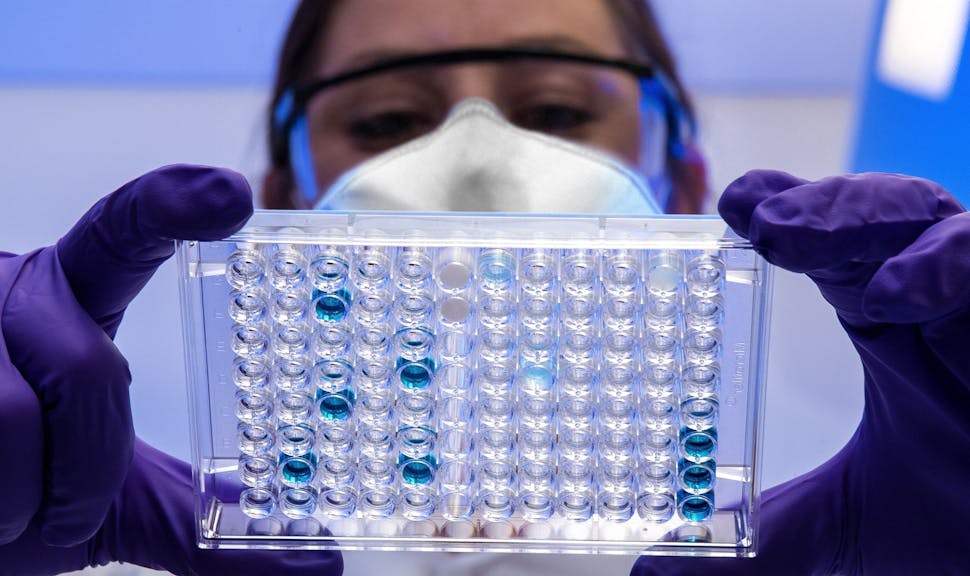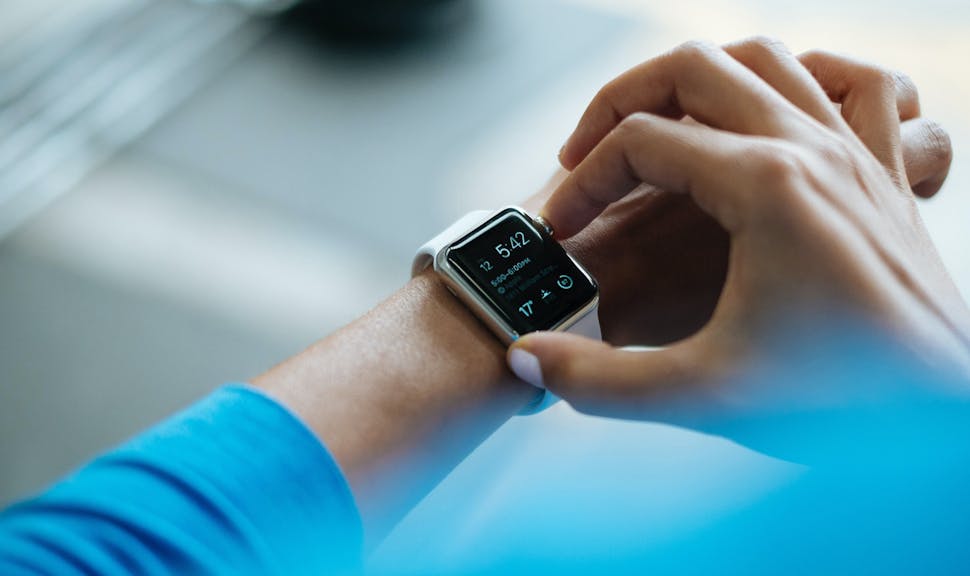
April 3, 2019
Communities: a critical driver of healthcare in the future?
From connected devices to patient-centric research and breaking down silos between specializations, what will healthcare look like in the future? This is one of the main questions raised in the 2019 AXA Foresight Trendbook. Coinciding with its release, we met with Olivier de Fresnoye, co-founder of echOpen, an ultraportable ultrasound probe designed by a community of several hundred researchers, patients and doctors.
6 minutes
In 1819, René Laennec, inventor of the stethoscope, published his Treatise on Mediate Auscultation, thus taking the first step towards the emergence of one of today’s most common medical practices. Two hundred years later, echOpen has arrived on the scene with its ambition of bringing this clinical examination into the 21st century.
EchOpen is above all an ultraportable echo-stethoscope, or ultrasound probe. It works by connecting to a smartphone, which serves as the screen. This tremendously innovative project can thus be used on the go, as an interface between classic auscultation (with a stethoscope, without imaging) and more in-depth examinations (CT scans, MRIs, ultrasounds). In other words, it gives a set of eyes to primary care doctors, first responders and other medical professionals. Finally, its designers also set out to keep this technology as inexpensive as possible.
The story and motivation behind its design point to a healthcare industry that is undergoing a profound transformation driven by technology, notably through new forms of innovation based on Open Source projects, which can mobilize vast communities. As this transformation shaping the healthcare industry is one of the central topics of the AXA Foresight Trendbook, we sat down with Olivier de Fresnoye, co-founder of echOpen and Epidemium, to shed some light on the stakes and challenges posed by these changes.

Both of your projects, Epidemium and echOpen, are notable for their open source methodology. Do you think leveraging communities is essential for innovating in healthcare?
Whenever we talk about innovation in the healthcare field, we have to remember the growing tendency of specialization in medicine, which goes hand-in-hand with our more detailed understanding of certain diseases. To take a simple example: just a few years ago, there was only one cancer specialist, an oncologist. Today, there are several types of oncologists: lung, breast, colon, etc. Some oncologists even specialize in certain types of breast cancer.
We can also see this broad trend towards medical specialization in terms of technology, with the rise of new, more detailed expertise in data science, statistics and artificial intelligence.
This specialization, which of course is necessary and beneficial for driving advances and in-depth knowledge, calls for new approaches to innovation. Put simply, we need to generate collaboration between different players from vastly different fields and to break down silos between various disciplines. We need to be able to promote a multidisciplinary approach between widely divergent topics, while maintaining an appropriate level of depth.
Because there may be convergences! I’m reminded of a research project between an astrophysicist and an oncologist, which showed that an algorithm used in astrophysics also offered a powerful solution for analyzing CT scans, a form medical imaging commonly used to monitor cancers.
The power of communities, which digital tools and technology can mobilize with ease, when coupled with the right methodologies, can deliver the multidisciplinary approach needed to produce radical innovations precisely where they are needed.
How can communities help to favor medical innovation?
With the right management, communities can help save time, boost performance and also generate creative solutions.
The power of communities resides in the spirit of healthy competition generated by collaborative research. To take a simple example: for Epidemium, we worked together to compile all the open data available worldwide concerning the environmental factors surrounding a type of cancer (air pollution, sun exposure, household cleaning products, pesticides, etc.). It would have taken a single researcher several years to do what we did in 3-6 months by mobilizing more than 200 people, each one working on a specific risk factor and country. Now this database is available to everyone.
Beyond the strength of numbers, there is an iterative dynamic involved in confronting several different skillsets and perspectives. Taking the example of echOpen, it’s a project that mobilized a community of researchers, engineers, doctors and also patients. It is this blend of multiple viewpoints that gives rise to new perspectives. For example, at a certain point when creating echOpen, we hit a snag concerning the cost of certain components. As our expert engineers saw it, we needed to use technologies that, in order to be reliable, would cost a pretty penny. But the problem was ultimately solved by a young engineer who found an alternative to the material in question: What if we used this component that we use at the university? It’s reliable, inexpensive, and if we make a certain modification it just might work...
Because they open up the design phase to new eyes that look at things in a different light, communities can supply truly innovative solutions at a low cost.
What role do patients play in these innovation communities?
They play a central role. We want to be accessible, whether in terms of care, use or cost. We want and we must include patients and healthcare providers in our planning processes. Even though they usually occupy a passive position – we supply tools that they use – we still need to adapt our solutions, so they match their uses as closely as possible. By co-developing our solutions with these stakeholders, we are sure to design pertinent use cases and functionalities adapted to needs.
The most concrete aspect of this trend lies in the fact that digital tools are used to mobilize these communities. In this way, we can also observe the trend of civic empowerment at work within the healthcare field. Patients become a crucial stakeholder in several ways. They can collect and share data, which is the lifeblood of research. This is what we call patient as a sensor
. But they can also perform simple and quick tasks for a research project or on themselves. This turns them into a workforce, or patient as a provider
.
Finally, there is the patient as collaborator
, referring to those who collaborate with researchers as they advance from defining the research question to publishing a scientific article or implementing a new protocol.
What role will patients play in healthcare in the future?
For too long we have left patients in the dark, by promoting a prescriptive relationship with their doctors. But digital has transformed everything by enabling patients to learn and gather more information on their own. Now we talk about patient-centric
approaches: which place the patient at the center of the system.
I’m not entirely in agreement with this approach: for me, patients should not be in the center, meaning simply an object of study. They should work alongside healthcare providers and researchers. In my view, we should center health topics like pathology, chronicity, environment, etc.
I think patients should play a larger role in decision-making processes. Patients are not only ill, or the object of study
for doctors and specialists, but they are above all the key agents in their own healing and daily health. They are also responsible for the medical information they share with researchers... In short, patients are now becoming full-fledged partners for the entire ecosystem, both upstream in terms of research or designing processes and downstream in terms of care given by doctors.
This means that patients will be the source of innovations intended for their benefit. This is notably the case for communities of patients afflicted with rare diseases, who organize worldwide to advance the state of research into their conditions. It also covers various aspects of patient engagement with research: data sharing, implementing simple actions patients can perform on themselves (drawing blood, self-testing) or even collaboration.
From patient empowerment to the role of communities in research and healthcare, what do these trends tell you about the future of healthcare?
I think we are taking our first steps into a new era of healthcare. Our work on echOpen to develop advanced medical equipment that can be used anywhere is just a prelude for what is to come. Healthcare will be distributed geographically and between different stakeholders. It will be delivered not only at the hospital, but also at home. We already see this today: there are more and more autonomous solutions (diabetes and insulin) and remote monitoring services.
Medical testing labs will no longer simply collect samples, but they will also analyze data from connected medical devices. Hospitals will become hubs and we will prescribe connected devices along with treatment plans. In this way, we will see a form of continuity in care, meaning continuous, painless and nearly invisible monitoring.
Healthcare is one of the chapters in the AXA Foresight Trendbook
Download the report to discover the other main trends.
DownloadTags:
Data in Health


